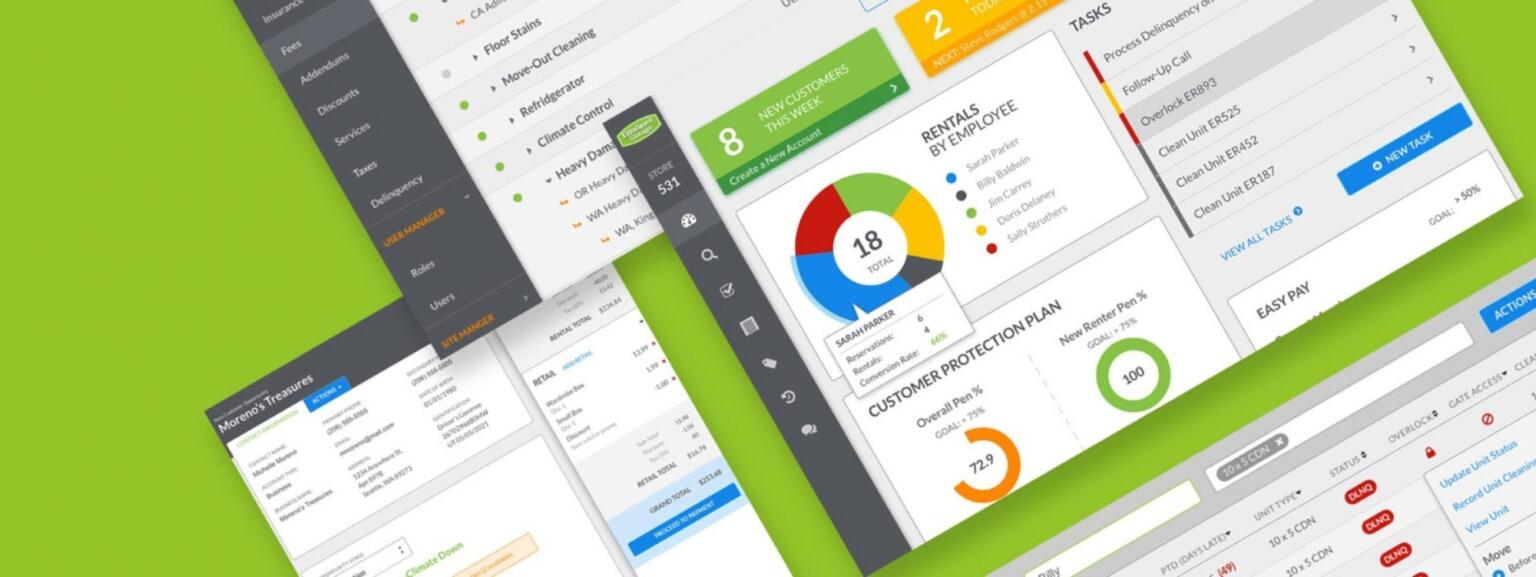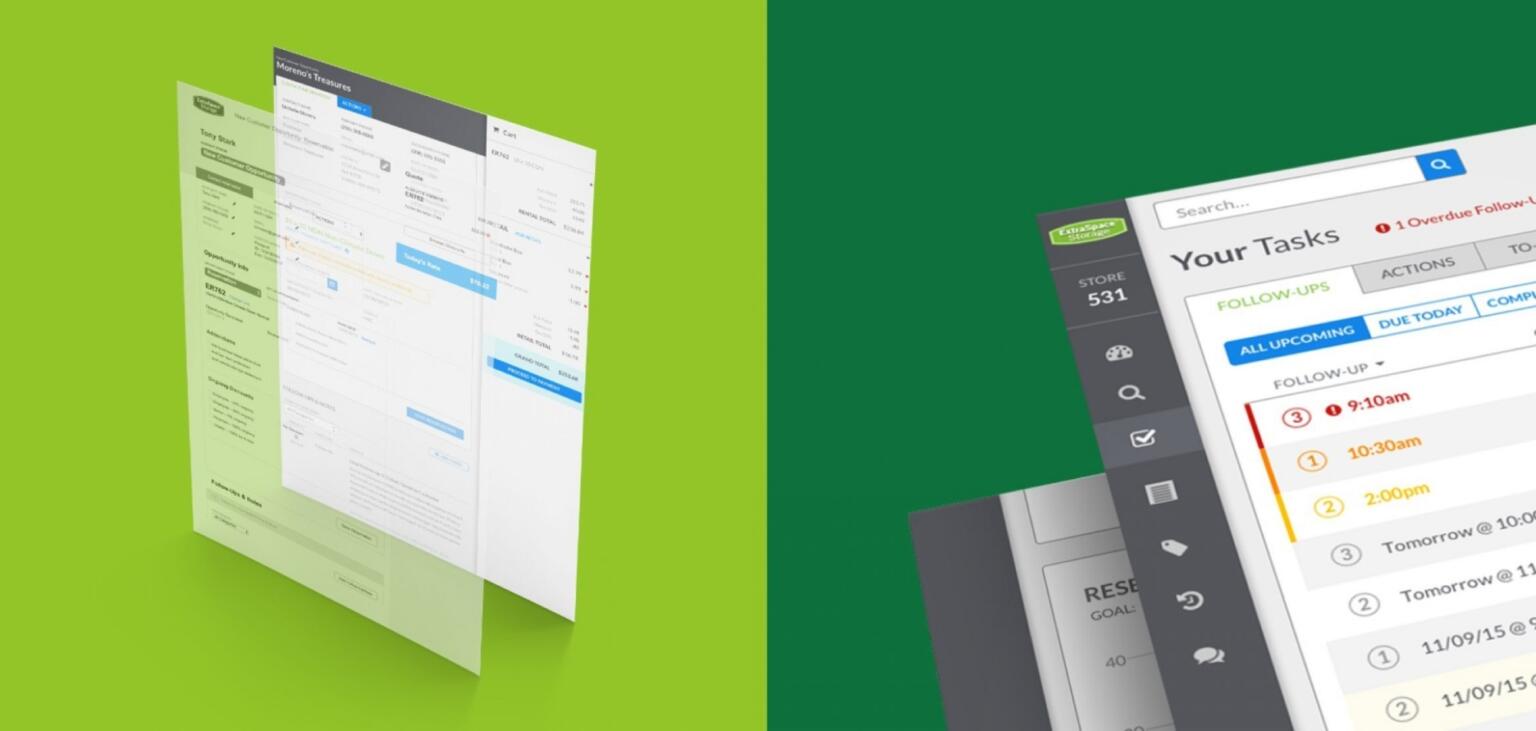Making room for custom solutions

OVERVIEW
With 1,500 storage facilities across the continent, Extra Space Storage saw the critical need for a seamless, higher-value customer engagement and point-of-sale platform.
Scope
Experience Design, Cloud Architecture, Software Engineering, Quality Engineering, DevOps, Agile, Data Modeling and Migration
Technology
AWS EC2, AWS Serverless, AWS CloudFormation, Angular.NET, Microsoft SQL Server on Amazon RDS, Entity Framework
From boxes to the cloud
From downsizing baby boomers to millennials living in tiny urban apartments, one in 11 Americans pay for self-storage to store their overflow of treasured possessions. Extra Space Storage, the second-largest self-storage provider in a $38 billion industry has acquired more than $4.5 billion in new properties over the past five years.
To support this rapid growth, Extra Space needed to replace an expensive and inefficient collection of off-the-shelf applications for a robust set of APIs and cloud-enabled back-end services to connect the entire organization.
“There are no enterprise-class off-the-shelf solutions in our industry today… Slalom helped us build for the future with modern software development tools and processes, transforming our IT organization along the way.”
— Bron McCall, Senior VP of IT
Build a team, and an experience
Extra Space was challenged by its first foray into the cloud, and the competitive pressure to connect with and delight customers with a rich, consistent, and efficient digital platform.
Extra Space needed to develop a muscular, sustained capacity for technology – changing a legacy IT orientation focused on assets to a design engineering team launching customer-centric product.
A multidisciplinary team with a clear vision for collaboration was needed to leverage existing technologists at Extra Space, adopt agile processes, and work through minimal viable product (MVP) and subsequent releases.

Empathy meets engineering
Three Slalom experience design consultants led a discovery phase. Their eight-week study included an audit of systems and on-site visits to 20 storage locations to deeply understand customers and the day-to-day experience of managers.
With discovery under way, the team established technical baselines. Upskilling the client team was a gradual process, with a top priority to establish a CI/CD pipeline to support multiple development teams across nine AWS development environments. At the peak of the project, four development pods were working simultaneously – two in Slalom’s Seattle Build Center and two in Extra Space’s Salt Lake City headquarters.
Design leaders used customer insights to establish a clear vision for applications and build a working prototype with detailed functionality and structured interface. This tangible artifact allowed us to build client consensus. Finally, we established a visual language that would be applied throughout the application, eventually influencing the company’s larger brand. Regular user acceptance testing (UAT) established product consistency and allowed for measurement of outcomes and success.

The platform Breeze achieved the critical mass of functionality to support day-to-day operations, and will be completely implemented by mid 2019. Extra Space now interacts more intelligently with customers, managers enjoy efficiencies, and customers are served faster.
With one consistent interaction point for all the company’s data and systems, opportunities for future development are virtually infinite – from displaying available units online in real time to integrating beacon technology for remote security. Extra Space now manages the product road map independently and continues to enhance features and functionality, exploring further serverless technologies for additional cost savings.
“Slalom has a deep understanding of our business and our project goals. Despite the enormous complexity of this system, we’ve really been set up for success.”
— Rich Keeler, Manager of Software Engineering
Rollout and results
With Breeze, Extra Space enjoys a powerful foundation to interact more intelligently with customers. Store managers are already enjoying efficiencies in use and serving customers faster. What's more, the storage experts are well-positioned for future development across all their technologies, which packs in more capabilities to serve customers better.
Next Up